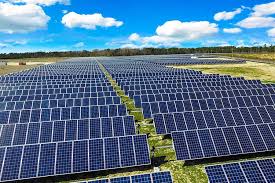Solar Energy Opportunities for Agricultural Producers
Many agricultural producers may perceive solar energy systems as high initial cost investments, but available federal funding can offset these expenses. For example, a South Carolina poultry farmer recently utilized federal funds to cover the full cost of his $300,000 solar panel system, as reported by The Wall Street Journal. This system is projected to eliminate the farm’s annual utility bill and potentially generate revenue through selling excess power to local utilities.
Now is an optimal time for agricultural producers to consider solar energy systems, with federal and state tax credits, grants, and loans readily available. However, the ability to sell excess power may not be available in all regions.
USDA’s Renewable Energy Program Receives $2 Billion Boost
Historically, the U.S. Department of Agriculture’s (USDA) conservation and renewable energy programs have been oversubscribed. The Inflation Reduction Act, signed by President Joe Biden in 2022, addressed this issue by allocating over $2 billion to the USDA’s Rural Energy for America Program (REAP). This program offers guaranteed loan financing and grant funding to agricultural producers and rural small businesses.
The increased REAP funding will continue through 2031, with agricultural producers able to utilize the program for installing renewable energy systems or making energy efficiency improvements. Additionally, producers may apply for new energy-efficient equipment and system loans for agricultural production and processing.
Producers can also leverage tax credits to offset renewable energy project costs. For smaller projects, tax credits can cover up to 70% of costs. This includes a 30% credit for all renewable energy projects and an additional 40% in bonus credits for projects using U.S.-made materials, located in former fossil-fuel regions, or situated in low-income communities.
Increasing Demand for Rural Solar Projects
Basil Gooden, USDA’s undersecretary for rural development, stated that the demand for rural solar projects is “skyrocketing.” This surge in interest is due to the nation’s growing focus on renewable energy and increasing electricity costs. Many farmers, livestock producers, processors, and landowners are exploring solar energy as a solution to reduce utility bills.
In 2023, the USDA invested over $362 million to assist farmers and rural small businesses in accessing renewable energy systems like solar. The Inflation Reduction Act funding was responsible for most of these investments. In April, the USDA announced additional funding for over 700 clean energy projects, with more than $194 million in REAP loans and grants supporting projects in 35 states.
REAP is accessible to producers in all states, with businesses needing to be located in rural areas with populations of 50,000 or less. Agricultural producers, however, can be located in rural or nonrural areas. The next application period for REAP’s renewable energy guaranteed loans and grants runs from June 30, 2024, to September 30, 2024.
Solar Developer Options and Solar Project Funding
Producers who prefer a smaller time or money investment can lease their farmland to a solar developer. This allows them to receive rental income without using the power for their farm-related operations. They can also sell their land to the developer as a purchase option, using the funds to liquidate debt, buy other land, or cover other needs.
Integrating a solar project into a farm can not only reduce a producer’s carbon footprint but also lower energy costs significantly. However, it is recommended that producers seek expert advice before committing to a solar project or lease.
For more information on solar project funding, visit:
Original Story at hpj.com
